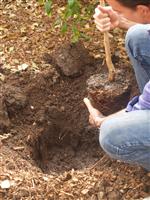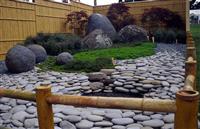

Develop Your Hard Landscaping Skills
Landscape construction is concerned with what it takes to build gardens and other landscapes. Since many types of construction in the landscape can be achieved in many different ways, this course serves as an introduction to some of the ways that different surfaces, enclosures and structures can be made.
Take all the guesswork out of landscape work
This course provides a thorough introduction to the world of landscape construction. It includes a range of methods and techniques to help students develop an understanding of which tools to use for different jobs, how to measure sites and set out plans, improving site drainage and earthworks, the setting out of basic garden structures and hard surfaces, and options for installing irrigation systems.